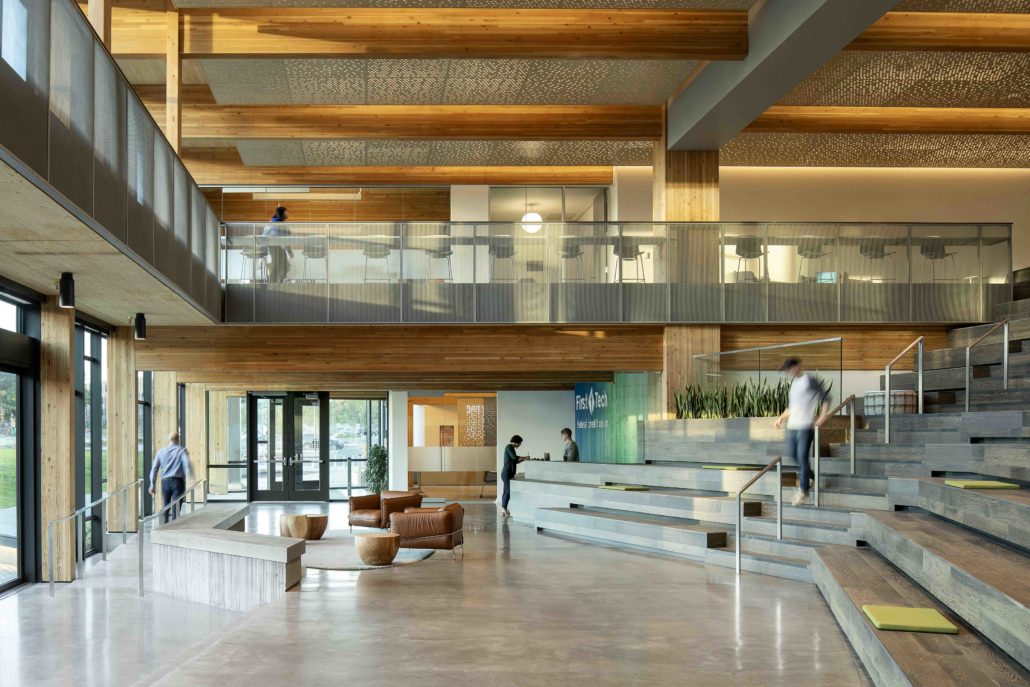Sustainably Growing the Mass Timber Industry
Mass timber has come a long way in the United States in the past eight years. “It wasn’t really in the building code in the United States until 2015,” says Bill Parsons, vice president of operations at WoodWorks, a nonprofit organization and a ULI Greenprint innovation partner headquartered in Washington DC. “Since then, we’ve gone from handful of projects to over 1,300 mass timber projects that are in design or have been built in the US. People are making money doing this—they try it once on a smaller project and then move to a bigger project. That’s the trend we’re seeing.”
Typically consisting of panels, columns, and beams of engineered wood products, mass timber structures are more lightweight than either concrete or steel ones and exhibit high levels of fire resistance. At a time when construction companies are experiencing labor shortages and supply chain issues have hiked material costs, mass timber holds the promise of requiring smaller construction crews and perhaps less price fluctuation compared with its conventional counterparts, steel and concrete. A renewable resource, it also sequesters carbon. However, fulfilling mass timber’s green potential means ensuring responsible forest management and planning for what happens to the timber after the building’s end of life.
Competing on price and lowering labor costs
Lumber costs have been particularly volatile since the start of the pandemic, increasing more than 300
percent between April 2020 and May 2021. However, those costs have been falling in recent months. “On a current project we’re pricing, we’re finding mass timber is coming in cheaper than steel and actually being quicker to source,” says Chris Chatto, principal of ZGF in Portland, Oregon. “We see the mass timber industrygrowing, and there’s going to be more competition and sophistication in the markets in terms of efficiencies.”
Because mass timber components are manufactured off-site in factories, smaller construction crews are required on site, and construction can be quicker. “In areas with potential labor shortages, because of the prefabricated system and because so much of the coordination of the trades is done ahead of
time, you can train less experienced labor in some of the trades to work with mass timber,” says Melissa Kroskey, technical director at WoodWorks. Drawing on building information modeling enables precise
Drawing on building information modeling enables precise detailing of timber components. “Our first mass timber building had over 4,200 penetrations for mechanical, electrical, and plumbing systems, which we did as part of the manufacturing process,” says William Silva, director of preconstruction at Swinerton, Portland, Oregon. “None of that had to be done on site: we didn’t have to try to core through a beam to run a pipe through it. The holes are there, all you have to do is run the pipe.”
For example, Swinerton only needed seven carpenters in the field to construct the 156,000-square-foot
(15,000 sq m) First Tech Federal Credit Union building in Hillsboro, Oregon. “We were able to fabricate more in the factory, and so that provided living wage factory jobs,” Silva says. “We’re finding that mass timber can allow for a safer environment for our workforce.”



